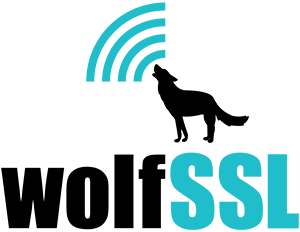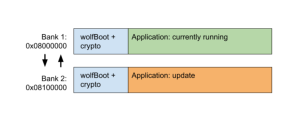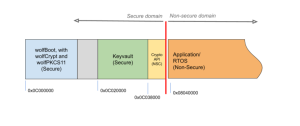While working on wolfBoot, many people ask us, how is it different from u-boot, and how does it compare to it if I am designing a secure boot strategy for my embedded systems based on microprocessors.
While taking the same role in embedded systems, wolfBoot and u-boot are two very different projects.
As bootloaders, they are responsible for initializing the hardware, loading the operating system kernel into memory and then executing it. Bootloaders are typically stored in a non-volatile memory like ROM or flash memory and are the first piece of software to run when a device is powered on or reset.
However, their design, code structure, modularity and core responsibilities are far from each other. Let’s find out by looking at the history of the two projects.
The rise of embedded Linux
U-Boot, short for “Das U-Boot,” is an open source bootloader commonly used in embedded systems, particularly in devices like mobile phones and network equipment. Its origins date back to 1999, when the bootloader was originally developed for the PowerPC-based systems. It has since been ported to many other architectures, including ARM and x86.
U-Boot is highly configurable and customizable, allowing developers to adapt it to various hardware configurations and requirements. It provides a command-line interface (CLI) for interacting with the bootloader during the boot process, allowing users to modify boot parameters, load additional software at runtime and even connect to a network to download new images. In addition to its primary role as a bootloader, U-Boot often includes additional features such as support for multiple filesystems, network booting, firmware updates, and diagnostic tools, making it a versatile and powerful tool in embedded system development. Its open-source nature also fosters a strong community of developers contributing to its ongoing development and improvement.
U-Boot is definitely feature rich, flexible and has lived up to its name for so many years, as the most popular generic-purpose bootloader for embedded systems within the range of microprocessors it supports. Throughout the past decades, U-Boot played a significant role in making embedded Linux systems more accessible and widespread. Its versatility and compatibility with diverse hardware architectures contributed to the popularity and success of embedded Linux in various applications, from consumer electronics to industrial automation.
The advent of IoT and its security challenges
With the advent of the Internet of Things (IoT) and the proliferation of connected devices, security concerns in embedded systems became more pronounced. High-profile attacks like the “Mirai” botnet, which exploited vulnerabilities in IoT devices, underscored the importance of securing firmware and boot processes. In response to the growing demand for secure boot solutions, the Internet Engineering Task Force (IETF) started to work on standardizing guidelines for secure boot mechanisms in embedded devices, publishing a draft document which was later on published as RFC9019 in 2021.
wolfBoot has been inspired in the first place by the many successful attempts of wolfSSL customers integrating wolfCrypt public-key verification mechanisms in custom bootloader solutions. This process however would consume a lot of time and resources, which could have been otherwise applied to more central features in their products, if only a solution would have been available to secure the boot mechanism. wolfBoot was then initially developed in 2018, using the draft document from IETF to define its core guidelines.
RFC9019 emphasizes the importance of establishing a secure root of trust and ensuring the integrity of the boot process from the hardware level onwards. It advocates for the use of cryptographic techniques, including public key ciphers such as RSA and ECC, for authentication and verification of firmware images and bootloader components. By using public key cryptography, embedded systems can verify the authenticity and integrity of firmware images before execution, mitigating the risk of unauthorized code execution and firmware tampering.
Additionally, RFC9019 recommends the use of small, robust parsers for processing and verifying configuration files, cryptographic keys, and digital signatures. Small parsers help reduce the attack surface and minimize the risk of vulnerabilities such as buffer overflows or parsing errors. By following these recommendations, embedded systems can enhance their security posture and resilience against sophisticated attacks targeting the boot process and firmware integrity.
A new era of safety-critical, connected systems
In recent years, there has been a proliferation of safety-critical systems that are either connected to the internet or accessible via private networks. This trend extends to various domains, including aerospace, automotive, healthcare and industrial automation. Examples include space systems, autonomous vehicles, medical devices, and industrial control systems. As safety-critical systems become increasingly interconnected, the need for robust security mechanisms, including secure boot, becomes a requirement. These systems are not only subject to safety requirements but also face cybersecurity threats from malicious actors seeking to exploit vulnerabilities and compromise their operation.
The convergence of safety and security considerations poses unique challenges for developers and operators of safety-critical systems. In addition to meeting stringent safety standards and certifications (e.g., DO-178C for avionics, ISO 26262 for automotive), they must also ensure compliance with security standards and best practices to protect against cyber threats and ensure system integrity. Additionally, international regulations are getting stricter every year to enforce traceability of code that is related to security in such scenarios.
wolfSSL offers a range of products that are meeting the needs for certified security that can run in compliance with safety regulations for any specific market. This is where wolfBoot excels among all competitors. A safe bet for cutting the costs towards secure boot in safety-critical embedded systems. wolfCrypt and wolfBoot have been DO-178 certified to DAL A level.
Quantum computers: new challenges to traditional cryptography
While U-Boot offers RSA-based cryptographic options, wolfBoot sets itself apart by leveraging the FIPS 140-2 certified WolfCrypt, a robust and trusted cryptography engine that adheres to the highest security standards. WolfCrypt not only provides support for a wide range of cryptographic algorithms but also offers compatibility with hardware security modules (HSMs), including Trusted Platform Modules (TPMs).
Out of the box, wolfBoot supports a comprehensive set of public key cryptography ciphers, including ECC up to ECC521, RSA up to RSA4096, ED25519, ED448, LMS, and XMSS. This diverse range of cryptographic algorithms ensures flexibility and future-proofing, allowing developers to choose the most suitable algorithms for their specific security requirements.
In the context of long-life systems where the bootloader is immutable, many projects have just started using post-quantum cryptography (PQC). As quantum computing technology advances, traditional cryptographic algorithms like RSA and ECC may become vulnerable to attacks, posing a significant risk to the security of systems relying on them. By incorporating PQC algorithms such as LMS and XMSS, wolfBoot ensures that even with the evolution of quantum computing, the secure boot process remains resilient and future-proof. This proactive approach to security is crucial for safeguarding the integrity and longevity of systems operating in environments where firmware updates are infrequent or impractical. By embracing PQC, wolfBoot offers peace of mind and assurance that the secure boot process will remain robust and secure throughout the lifecycle of the system, providing long-term protection against evolving threats and vulnerabilities.
Secure boot: what really matters
We have analyzed how the two projects have started and evolved with two different goals in the mind of their developers. But what aspects really matter in today’s secure boot solutions? The answer is not easy. U-Boot has so many supported features that could be compared to an operating system, and as we have seen the importance of flexibility in the evolution of embedded Linux systems in the past. wolfBoot is small in size, safety oriented and focuses primarily on the secure boot capabilities. When designing a secure boot strategy, a few key indicators should be taken into consideration:
- Bootloader’s main purpose: U-Boot aims to be a portable and flexible generic bootloader, while wolfBoot is designed primarily as the main building block for secure boot mechanisms, providing specific countermeasures against attackers having different levels of access to the target system. By default, no user interaction is provided on purpose, to reduce the attack surface as much as possible.
- Quality of cryptographic engine: wolfBoot is built on top of wolfCrypt, the best tested open source cryptography engine in existence. This means that the algorithms provided to secure the boot process are reliable, certified, transparent and supported by a team of professional developers.
- Code size: more code certainly means more features, but also more vulnerabilities, higher cost of maintenance, which can easily become unaffordable when safety regulations are added to the picture. wolfBoot guarantees the lowest possible costs related to safety certifications
- Safety by design: wolfBoot’s compile-time predictability guarantees consistent behavior across different builds and environments. This reliability is invaluable in ensuring the system behaves as expected under all conditions.
- Post-Quantum cryptography: Quantum computers leverage principles of quantum mechanics to parallelize computations at a scale far exceeding those of classical computers. This computational power poses a significant threat to traditional cryptographic algorithms, which rely on the difficulty of certain mathematical problems for their security. Post-Quantum Cryptography (PQC) seeks to develop cryptographic algorithms that remain secure even in the presence of quantum adversaries. PQC algorithms are designed to withstand attacks from both classical and quantum computers, ensuring long-term security in the post-quantum era. wolfBoot provides support for LMS and XMSS.
Hybrid boot chain
Are you still a big fan of u-boot unique features and flexibility? So are we! If you still want to use any of the features u-boot offers but you want to secure your boot mechanisms, then multi-stage, hybrid solutions may be for you. A hybrid approach can be adopted where the bootloaders coexist in separate stages. In this scenario, wolfBoot can serve as the initial secure bootloader responsible for securely loading and verifying the subsequent stages, including U-Boot images.
wolfBoot can be deployed as the early-stage bootloader responsible for initializing the hardware, performing the initial boot sequence, and verifying the integrity and authenticity of subsequent bootloader stages. It securely loads and verifies the authenticity of the next bootloader stages, in this case including the U-Boot image, using cryptographic signatures and trusted keys stored securely within the system. Once the U-Boot image is verified, wolfBoot hands over control to U-Boot, allowing it to execute with the assurance that it has been securely loaded and verified by wolfBoot.
While U-Boot provides advanced features and flexibility, its complexity can introduce potential vulnerabilities. If vulnerabilities or security issues are discovered in the running U-Boot image, wolfBoot can securely update the U-Boot image with a patched version or a newer release. This ensures that the system remains protected against emerging threats and vulnerabilities without compromising its advanced features.
Conclusions
The comparison between wolfBoot and U-Boot reveals distinct strengths tailored to different needs. U-Boot boasts extensive device support and a well-established feature rich codebase, making it ideal for systems requiring flexibility and connectivity from the very initial stages. On the other hand, wolfBoot shines in security, with lightweight design and certified cryptography ensuring system integrity and low costs of maintenance, making it a perfect fit for all secure-boot requirements across all embedded systems.
In those scenarios where ensuring the integrity of the boot process and validating the authenticity of firmware are crucial, wolfBoot’s lightweight design and certified cryptography are definitely a solid choice: wolfBoot defines the path to securing the boot process for safety-critical embedded systems of the future.
Have questions about your boot strategy? Contact us at facts@wolfSSL.com or +1 425 245 8247!
Download wolfSSL Now




